Trisha Capansky, assistant professor of English and Modern Foreign Languages worked as a journalist for several years before deciding to hang up her reporter’s hat.
She became interested in politics and government at a very young age.
“I can’t remember a time when I didn’t have an interest in politics and government. When I was about 6 years old, I remember my father receiving a notice from the city stating that the fence he recently built in our front yard encroached upon city property, meaning it was too close to the curb. If he didn’t move the fence, he would be fined,” Capansky said.
“He was so upset that he carried the conversation to the dinner table that night. As much as I felt sorry for my father, I was awed by the power of the person writing that letter. It was then that I began to realize the influence government has over people.”
The combination of journalism and her interest in politics and government was a natural fit for Capansky.
“Writing for newspapers afforded me the opportunity to immerse myself in these interests [politics and government], not to mention witness firsthand the goings on behind the curtain; there is something to be said for press cards,” Capansky said.
Capansky says the life of a journalist is hectic but definitely worth it for those who love news.
“Every day is an adrenaline rush. News never sleeps, and I would argue that as a journalist, neither do you. Editors call at all hours of the day and night when they hear a rumor about some shenanigans involving the mayor and want you to check out the story’s validity, or they have, yet, another last minute question about a line in your article,” Capansky said.
Capansky covered a variety of assignments throughout her journalism career, but says her favorite assignments were the ones that made a difference in someone’s life. Her pet project was neighborhood sustainability.
“I covered so many situations involving homeowners who were trying to maintain their property values by striking out against slumlords and fellow neighbors whose properties had seen better days,” Capansky said.
In one such case, city officials bulldozed a woman’s mobile home because neighbors had complained about her living in it without sewer, water, and electricity.
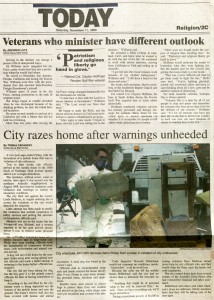 In a similar case, city officials began posting “slumlord” signs in front of homes owned by absentee landlords who were negligent in keeping their properties up to code, because of a program that she helped establish.
In a similar case, city officials began posting “slumlord” signs in front of homes owned by absentee landlords who were negligent in keeping their properties up to code, because of a program that she helped establish.
She says she also enjoyed the rare occasion when one of her newspapers would let her write an article on baseball for the sports section.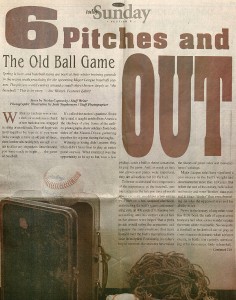
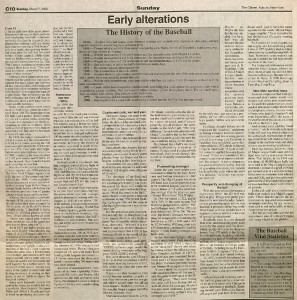 “My favorite article on baseball is the one where I interviewed the three living Hall of Fame players for North Carolina – Enos “Country” Slaughter; James “Catfish” Hunter; and Gaylord Perry,” Capansky said.
“My favorite article on baseball is the one where I interviewed the three living Hall of Fame players for North Carolina – Enos “Country” Slaughter; James “Catfish” Hunter; and Gaylord Perry,” Capansky said.
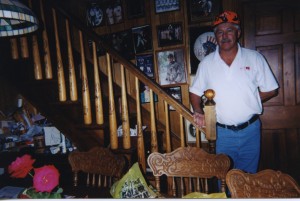
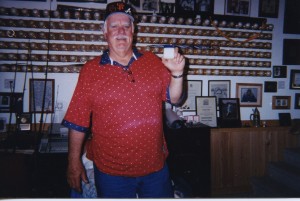
During her interview with Hunter while sitting on the tailgate of his pickup, she noticed that his hands were shaking when he signed her baseball card. He explained that the shaking was possibly from having Lyme disease, which he believed to be caused by a tick bite he received while hunting. Capansky’s interview with Hunter took place only weeks before he was diagnosed with Lou Gehrig’s disease.
She found her interview with Perry especially interesting because they sat in his garage, which he had converted into a baseball shrine. During Perry’s baseball career he had been suspected of greasing the ball. So, Capansky not only asked him to sign her baseball card, she also got had to sign a jar of Vaseline.
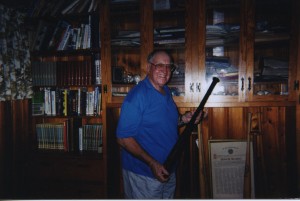
Baseball movie fans who saw the movie 42 about Jackie Robinson’s life may remember Enos Slaughter as the baseball player who was accused of racism when he stepped on Jackie Robinson’s foot. He died of non-Hodgkin’s lymphoma in 2002 at the age of 86. Catfish Hunter built his own house. He used baseball bats for the banister. He built his house a quarter of a mile from where he was born and married his high school sweetheart. He died of Lou Gehrig’s disease in 1999 at the age of 53. Gaylord Perry was the first player to win the Cy Young Award for both the American and National Leagues. He was always accused of greasing the ball.
There was an individual that she was covering on her beat that was involved in questionable behavior. After repeated front page news stories on the subject, it had an effect on his mental state, and he eventually committed suicide. Even though she had not broken any ethics, Capansky chose to finish her journalism career, and she took a position with City Hall as a planner.
“When I left the newspaper business to hire on with City Hall, one of my first goals was to begin a program specifically geared toward helping homeowners in low income areas. We were able to provide a lot of good assistance with this program, because it was designed as being a one-stop-shopping experience, which is a nice change when you are dealing with bureaucracy at any level,” Capansky said.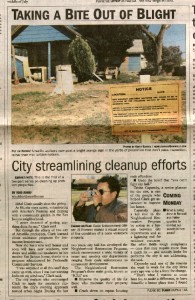
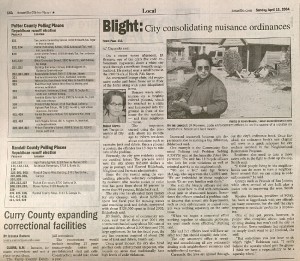
Capansky’s journalism career gave her the opportunities to cover a variety of different stories and meet many interesting and famous people. She covered Hilary Clinton during her “Listening Campaign” through New York, talked with Newt Gingrich during the capitol shooting in 1997 and still has the press pass she received while covering a story on Air Force One.
“Within your community you are the hero one day and public enemy number one the next. Victories are short lived so you need to have the skin of a pachyderm if you plan to enter this profession as a hard news reporter. But, I dare say no journalist would trade the experience for anything because the rewards are priceless. There is an old newspaper saying that goes ‘Never argue with someone who buys his ink by the barrel.’ Newspapers wield a lot of power. As a journalist you are often the poorest person in a room, but you are also always shortlisted for being one of the most influential,”Capansky said.
Related articles regarding Dr. Trisha Capansky: “Professor trains hard, lives life to fullest”


